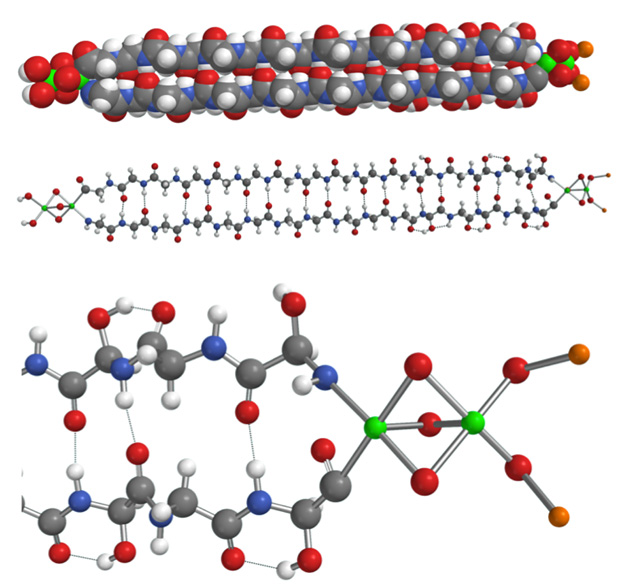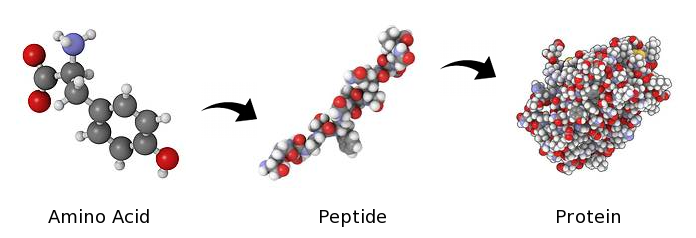
Meteorites, or rocks from outer space, can contain valuable clues about how life began on Earth. Various organic molecules and even amino acids have often been found inside meteorites. Now, Harvard University researchers claim they’ve discovered the first-ever complete proteins in two meteorites. While this isn’t yet proof of life itself, proteins do play a key role inside the cells of living creatures. These recently found proteins are the most complex organic molecules found so far, if the results hold up to further scrutiny (already being debated).
The intriguing discovery was first announced by Dan Robitski in an article for Futurism on February 27, 2020.
The research paper was submitted to the preprint server arXiv on February 22, 2020, and it has yet to be peer-reviewed or published in a journal. The team included researchers from Harvard University and biotech companies PLEX Corporation and Bruker Scientific.
The research team, led by Malcolm McGeoch of PLEX, found the protein – which they named hemolithin – inside two meteorites, Acfer 086 and Allende. Acfer 086 was found in Algeria in 1990 and Allende was discovered in Mexico in 1969. The researchers state that they are confident the proteins did not originate on Earth, saying:
This is the first report of a protein from any extraterrestrial source.
They also say that the building blocks of the proteins – amino acids – are chemically different from those on Earth, with isotopes indicating an extraterrestrial origin.

As the abstract for the paper explains:
This paper characterizes the first protein to be discovered in a meteorite. Amino acid polymers previously observed in Acfer 086 and Allende meteorites have been further characterized in Acfer 086 via high precision MALDI mass spectrometry to reveal a principal unified structure of molecular weight 2320 Daltons that involves chains of glycine and hydroxy-glycine residues terminated by iron atoms, with additional oxygen and lithium atoms. Signal-to-noise ratios up to 135 have allowed the quantification of iron and lithium in the various MALDI fragments via the isotope satellites due to their respective minority isotopic masses 54Fe and 6Li. Analysis of the complete spectrum of isotopes associated with each molecular fragment shows 2H enhancements above terrestrial averaging 25,700 parts per thousand (sigma = 3,500, n=15), confirming extraterrestrial origin and hence the existence of this molecule within the asteroid parent body of the CV3 meteorite class. The molecule is tipped by an iron-oxygen-iron grouping that in other terrestrial contexts has been proposed to be capable of absorbing photons and splitting water into hydroxyl and hydrogen moieties.
Confirmation of a complete protein in a meteorite would be exciting. Amino acids, the building blocks of proteins, have been found in meteorites before, but this would be the first time that enough of them were found in a long enough chain to be considered a complete protein. Shorter chains of amino acids, typically less than 50, are called peptides.
New types of amino acids had also been previously found in the Murchison meteorite, as reported in 2017, but they still didn’t form complete proteins.
Vice also ran an article about the protein discovery on February 28, 2020, quoting study co-author Julie McGeoch, a molecular biologist at Harvard University:
At this point, we need other scientists to employ our careful methods to repeat our results.
Confirmation from other scientists, or not, will be important in follow-up studies. Only then will it be accepted as hard evidence of proteins being able to exist in meteorites or even other rocky extraterrestrial bodies as well.

The reported discovery is not just happenstance, according to the researchers, but the result of more than ten years of study.
McGeoch and his team wanted to see if they could isolate complete proteins from the meteorite samples, not just amino acids as had been found previously. If the findings are accurate, then it would seem they succeeded. The Bruker company provided “the very best mass spectrometry,” according to McGeoch.
One concern that would come up, of course, would be whether the proteins could be the result of contamination from Earth. So how did the researchers determine whether that was the case or not?
They calculated its deuterium/hydrogen ratio (D/H), the ratio between deuterium (heavy hydrogen, 2H) and hydrogen (1H) in natural waters and other fluids. According to the researchers, the analysis revealed “very high extraterrestrial D/H ratios.” That would suggest that the protein is much older than Earth, perhaps formed in the disk of dust and gas that surrounded the early sun as the solar system was first forming. It may even have originated earlier, in interstellar molecular clouds.
Some meteorites have also been found to contain stardust grains – or presolar grains – tiny particles originating from interstellar gas before the sun first formed.

The hemolithin is also interesting because it may able to split water into its separate oxygen and hydrogen molecules. That kind of splitting process is known to have helped life first develop on Earth. That capability of hemolithin is still speculation at this point, however, according to McGeoch:
If true, this could be a chemical energy source, which is the most important ingredient for a biochemical process leading on to life.
There is already some pushback on the claims, including from Regius Professor Lee Cronin, who stated on Twitter that the proteins are probably actually proteinoids, “protein-like, often cross-linked molecules formed abiotically from amino acids” that can form without any involvement of biology.
If it is confirmed, however, that these meteorites contain actual proteins, that would have significant implications for the possibility of life elsewhere in the universe, as well as for how life first originated on Earth. Meteorites rained down on the early Earth billions of years ago, bringing amino acids and other organic molecules with them. Just how this ties in with the development of life, or to what extent, still isn’t well understood. But if meteorites also provided proteins, that would certainly make things even more interesting.
Bottom line: Scientists at Harvard University have reported, for the first time, the discovery of complete proteins inside two meteorites.
Source: Hemolithin: a Meteoritic Protein containing Iron and Lithium











